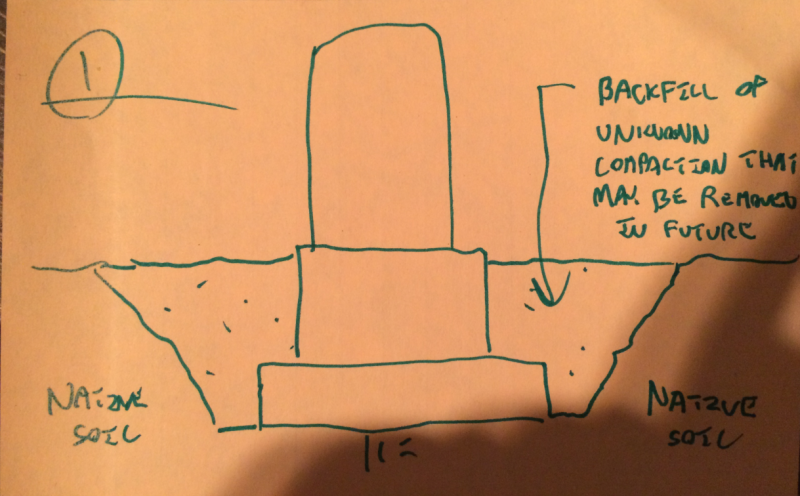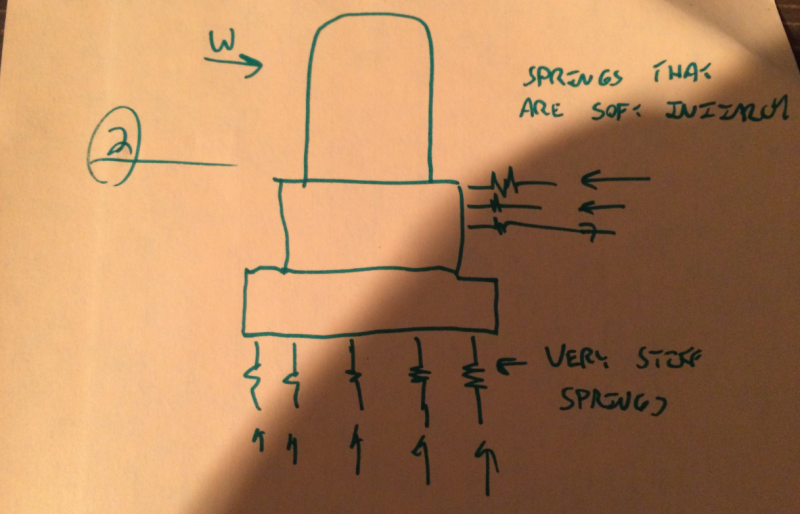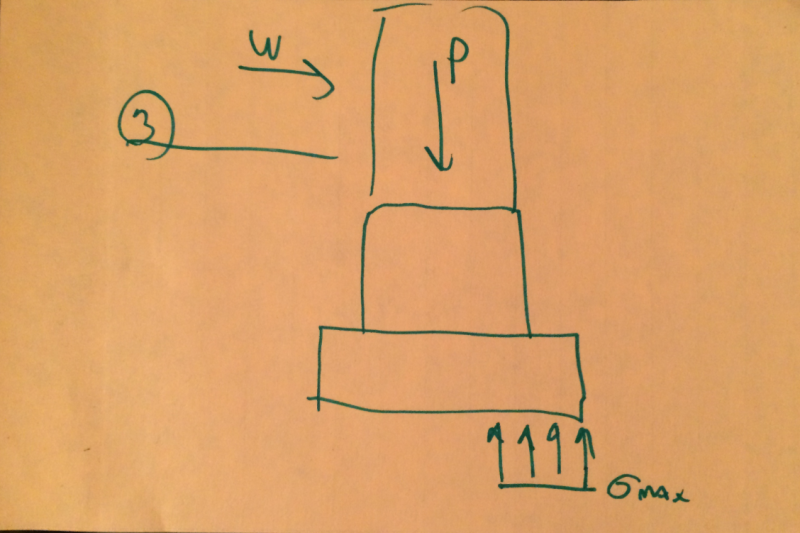Hi fellow engineers,
[ul]
I’m evaluating an existing shallow foundation, please see the attached diagram, and I would like to know if it’s logical to account for passive soil resistance in the “empty + wind” load case. Here is the background:
[ul]
[li]Octagonal foundation (7’ feet, 7’-10” deep) has stood for 46 years[/li]
[li]Foundation is for a vessel. The vessel will be replaced in kind. Therefore, I’m assuming the weight will be the same.[/li]
[li]Using an Ultimate Limit State load combination the soil underneath the foundation fails by a large margin (13,000 psf>>6200 psf) by bearing.[/li]
[li]Soil is clay.[/li]
[/ul]I think my results are unrealistic/over conservative because this structure has stood in place for 46 years without any problems. I checked the original calculations (allowable stress) and the original calculations are correct.
I would agree to using passive pressure when checking the sliding case and the overturning case. However, I’m not sure about the “empty+ wind” case.
[ul]
Can someone please tell me if I can or can’t use the passive pressure?
Thank you very much in advance.
[ul]
I’m evaluating an existing shallow foundation, please see the attached diagram, and I would like to know if it’s logical to account for passive soil resistance in the “empty + wind” load case. Here is the background:
[ul]
[li]Octagonal foundation (7’ feet, 7’-10” deep) has stood for 46 years[/li]
[li]Foundation is for a vessel. The vessel will be replaced in kind. Therefore, I’m assuming the weight will be the same.[/li]
[li]Using an Ultimate Limit State load combination the soil underneath the foundation fails by a large margin (13,000 psf>>6200 psf) by bearing.[/li]
[li]Soil is clay.[/li]
[/ul]I think my results are unrealistic/over conservative because this structure has stood in place for 46 years without any problems. I checked the original calculations (allowable stress) and the original calculations are correct.
I would agree to using passive pressure when checking the sliding case and the overturning case. However, I’m not sure about the “empty+ wind” case.
[ul]
Can someone please tell me if I can or can’t use the passive pressure?
Thank you very much in advance.



